Currently, PP-GF Compound is used in many industries because of its high durability, flexibility and many other perfect characteristics. Besides, PP-GF Compound not only combines with glass fiber but is also easily compatible with many different types of plastic additives. Therefore, their mechanical characteristics and chemical properties are improving through each stage. In this article EuroPlas will introduce to you commonly used plastic additives for PP-GF Compound material.
Read more: What are plastic additives? 8 most common plastic additives in plastic industry
1. Overview of PP-GF Compound definition
PP - GF Compound material is the abbreviation of PP Glass Fiber Compound plastic, also known as Glass Fiber PP Plastic. This is considered one of the synthetic materials linked with Polypropylene (PP) and glass fiber components.
The chemical structure of the PP plastic matrix will accept glass fiber additives into its molecular matrix to improve the mechanical and physical characteristics of the product.
Glass fiber is famous as a plastic additive that effectively improves the mechanical strength of most plastic materials. In particular, they easily adapt to many environments and contribute to increasing production efficiency in many industries.
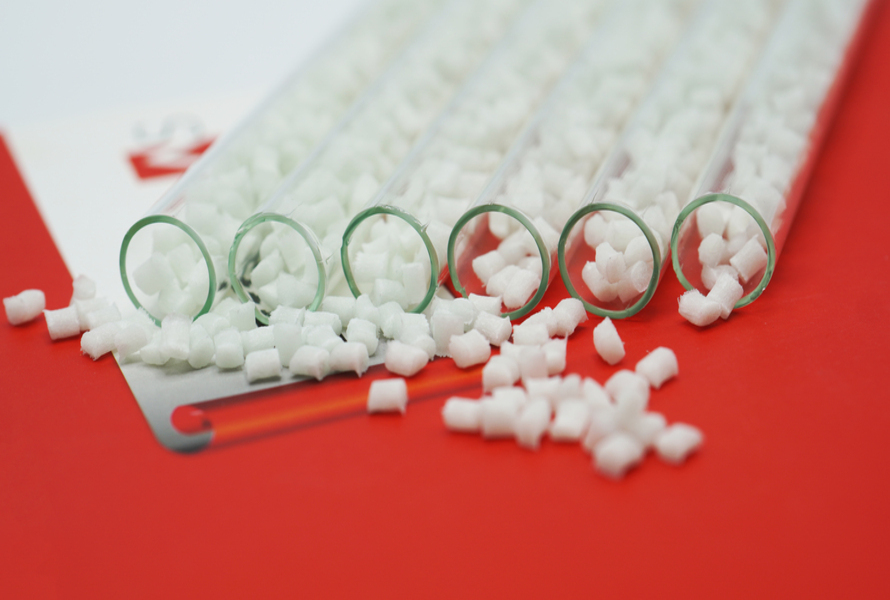
PP-GF Compound
Glass fibers are short fibers that are short in size and cut quite small. Therefore, they will easily blend into the dense molecular structure of the PP plastic base and distribute everywhere.
Besides fiberglass plastic additives, other plastic additives can also promote the strengths and limit the weaknesses of PP-GF Compound materials.
EuroPlas will introduce it to you in the next section.
2. Commonly used plastic additives for PP-GF Compound
To accurately meet the needs of heavy industries and the market, products from common plastic materials such as PP-GF Compound must ensure durability, flexibility and maintain stability.
To achieve those factors, manufacturers are required to combine conventional materials with plastic additive compounds. PP-GF Compound material has built-in glass fibers and is also easy to combine with other additives to improve performance.
In addition, the market has a wide variety of plastic additives that fully meet the material's characteristics from high temperature resistance, good hardness, electrical resistance, anti-aging or chemical resistance,... All of them easily interact and combine with each other to create solidity for the chemical molecular structure of plastic materials.
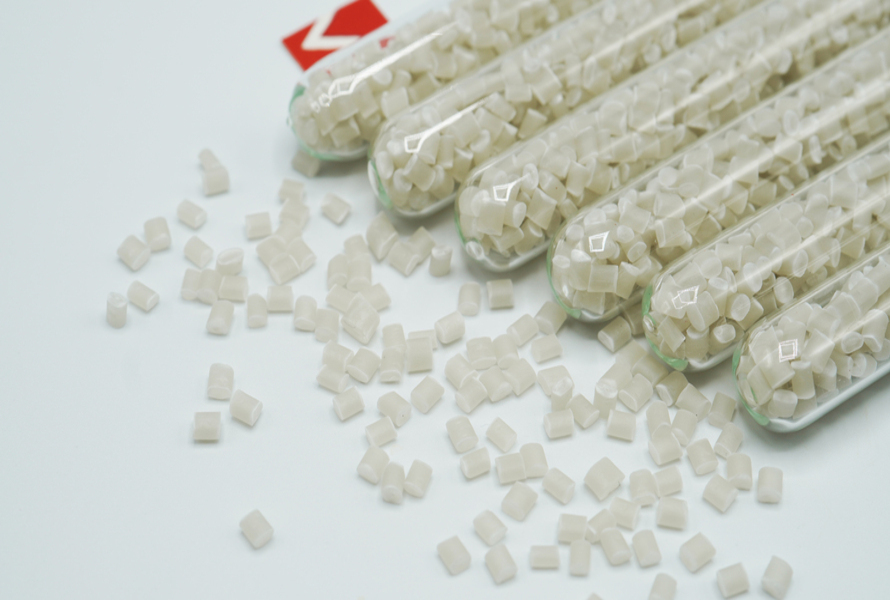
PP-GF plastic compound is easily combined with plastic additives
2.1 Antistatic additives
Antistatic additives are the most common plastic additives when combined with PP-GF Compound plastic. Because PP-GF Compound material is commonly used in the production of technological electronic devices, aviation, household electrical appliances,...
Besides, if PP-GF Compound plastic is not combined with antistatic additives, they will leak or discharge excessive electricity under great pressure of temperature. This will cause the risk of fire, explosion, damage to components and affect customer safety during use.
Antistatic plastic additives work on the principle of attracting water to the surface and eliminating it, because most antistatic agents are hygroscopic materials. This process causes the charges to be dissipated when reaching the molecules in the structure of PP-GF Compound.

Antistatic additives
In particular, the effectiveness of antistatic additives is proportional to the humidity around the material and the environment. As humidity increases, the surface conductivity of the treated polymer increases, resulting in faster charge flow and better antistatic properties.
To optimize antistatic ability, the manufacturer of PP-GF Compound will incorporate antistatic additives both on the outside and inside of the material. Quaternary Ammonium Salts or "Quats'' are the most common external antistatic additives. Meanwhile, Migratory Antistats (MAS), Cationic Antistatic, Anionic Antistats or Nonionic Antistats are antistatic additives inside the material.
Antistatic additives are very suitable for PP and PE plastics. Besides, this additive also creates a protective layer for the material under the influence of UV rays.
Read more: Plastic additives at EuroPlas
Plastic products will cause quite an unpleasant odor if they are not thoroughly cleaned immediately after purchase. That's why odor removing plastic additives plays an important role. Additives will completely eliminate unpleasant odors of plastic products (especially recycled plastic materials).
Eliminating the odor of plastic helps manufacturers improve sales, while ensuring the sustainable quality of the product line before launching to the market. Odor removing plastic additives will act as an odor neutralizer.
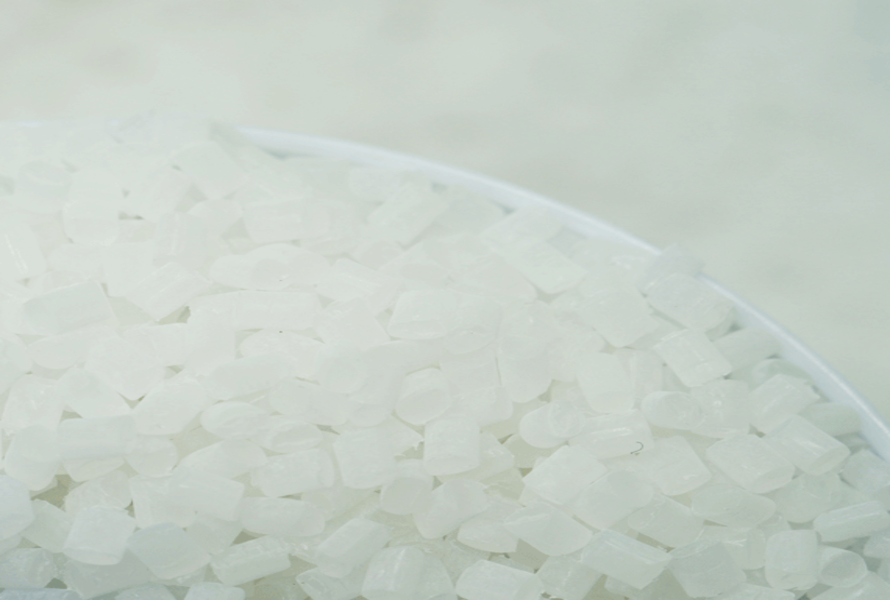
Odor removing plastic additives use for household products
It can be a good and long-lasting substitute for the original smell of the product. In particular, deodorizing plastic additives create connections and bonds with the chemical molecules of the material, forming a barrier that prevents irritants or the unwanted generation of strange odors.
This type of plastic additive is commonly used in household goods, product packaging, textiles and fashion. These are also the strengths of PP-GF Compound plastic material. In addition, odor removing plastic additives are completely suitable for mass production because they adapt to many different types of plastic materials and ensure all safety factors for consumers' health.
Aging can easily occur with low-quality plastics after long periods of use. Besides, aging also occurs when plastic materials are processed at high temperatures and exposed to too much oxygen from the air. Frequency of use is also a factor in the aging and quality loss of plastic. In particular, UV rays are the biggest threat to plastic materials if they have not been combined with appropriate plastic additives.
The Glass Fiber component of PP Compound only increases the durability and impact resistance of the material, but it does not guarantee longevity. In the context of increasing plastic market demand, popular plastics such as PP and PE are used more often. Therefore, anti-aging plastic additives are equally important ingredients.
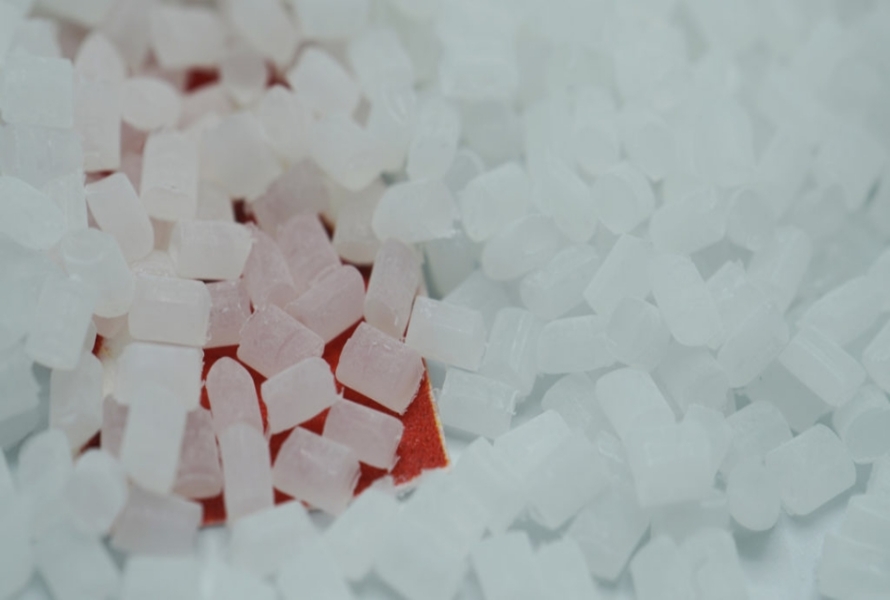
Anti-aging plastic additives are used to extend the life of the product
Decomposition inside cells when affected by the environment will be limited if the material is combined with anti-aging plastic additives. The phenomenon occurs when we see plastic materials showing signs of cracking and fading. The flexibility in the chemical structure of anti-aging plastic additives also aids them in interacting favorably with other compounds and materials.
We can combine many plastic additives into the same product line. However, the manufacturer must ensure absolute accuracy in terms of formula, additive quantity and international standards.
Moisture is formed from the effects of weather conditions, climate and environmental temperature. This is an unavoidable reality for many products and materials. However, high levels of moisture accumulating in the product will affect the material's surface as well as its quality.
Not only that, plastic materials will easily cause errors related to: molding, shaping, and injection molding if not combined with hygroscopic plastic additives. Therefore, desiccant plastic additive will contribute to improving production performance as well as product quality.
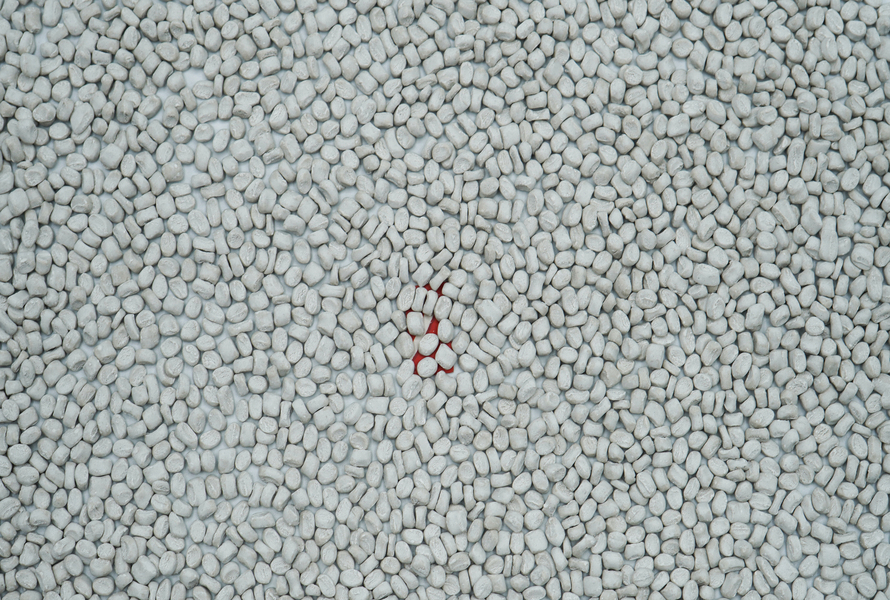
Desiccant plastic solve the problem of material moisture during processing (injection molding, bearing blowing, blow molding,...)
The Calcium Oxide (CAO) molecules of the desiccant plastic additive will disperse within the chemical structure of the material and begin the process of removing all moisture and preventing phenomena such as fish eyes. In addition, hygroscopic plastic additives are also commonly used with recycled plastic materials because they can eliminate oxidation effects caused during processing.
Desiccant plastic additive at EuroPlas possesses the following superior characteristics:
- High compatibility with many different materials
- Good dispersibility within the chemical structure of the material
- Improve production efficiency
EuroPlas has introduced to you the Top 4 types of plastic additives commonly used with PP-GF Compound. Prominent among them are antistatic plastic additives. In the next section, EuroPlas will help you know the characteristics of PP-GF Compound plastics when they have not been combined with any plastic additives.
3. Main characteristics of PP-GF Compound plastic.
Composite engineering plastics combined with fiberglass possess many outstanding advantages that help them outperform other materials and are sought after in many industries.
Combining the flexibility of Polypropylene and the properties of fiberglass, PP-GF Compound material increases performance and brings reliability to the market.
- Hardness: This is the most outstanding feature of PP engineering plastic compounds because they are combined with glass fiber. Glass fiber will be added according to the level based on customer needs such as: PP-GF30 Compound (30%), PP-GF20 Compound (20%) and so on. Glass fiber improves the tensile strength, high bearing capacity and temperature stability of the material. They are suitable for use in heavy industries.
- Maintains dimensional stability: Compared to traditional Polypropylene lines, the dimensional stability of PP-GF Compound is much superior. Conditions such as deformation, cracking, warping or shrinkage will be completely eliminated because of the properties of fiberglass and the hardness of the material.
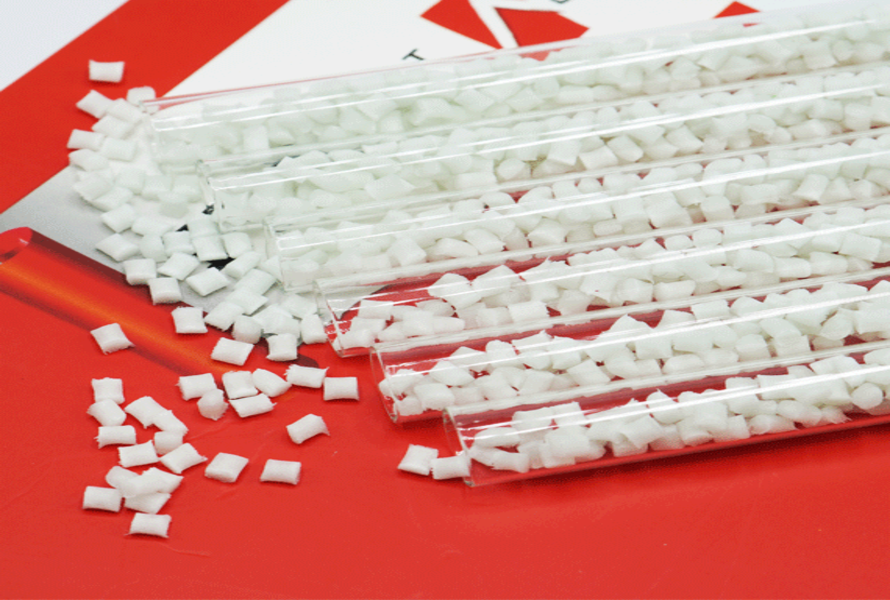
- High temperature resistance level: The heat resistance level of PP-GF Compound plastic is about 100 degrees Celsius for long periods of time and 150 degrees Celsius for short periods of time. In particular, they are not deformed and can continue the machining process immediately afterwards. Therefore, PP-GF Compound plastic is used to produce products for outdoor use.
- Avoid impacts from strong chemicals: PP-GF Compound plastic can resist strong chemicals such as: Acids, solvents, kerosene,...
- Light weight: The original weight of Polypropylene is quite light. In particular, this nature is not lost when they are combined with fiberglass. PP-GF Compound plastic is not only light but also very durable. Therefore, they are suitable in industries such as automobiles, aerospace, heavy industry,...
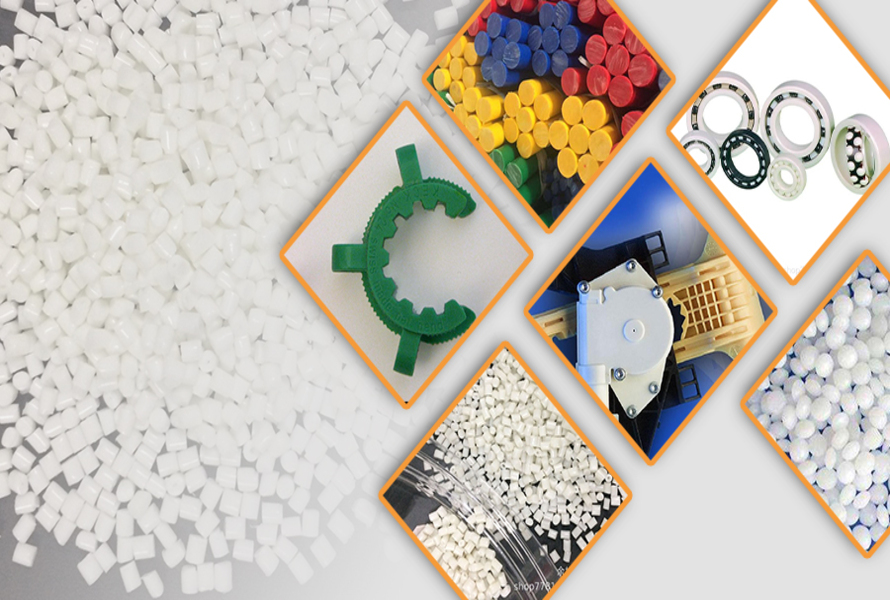
PP-GF Compound material is used in many fields
4. Introducing PP-GF Compound technical plastic product at EuroPlas
EuroPlas is always proud to be one of the leading masterbatch manufacturers in the Vietnamese market. EurPlas has many years of experience in the industry of manufacturing plastic additives and technical plastic compounds Polypropylene (PP-GF).
PP-GF Compound products at EuroPlas are combined with high quality glass fiber content, contributing to increased durability and bearing capacity in high pressure environments. We operate with the criterion "Customer and Market are the focus", so EuroPlas ensures that production processes meet international standards and products possess all legal procedures/papers of the ministries. related industry.
Every inspection process from input materials to distribution to the market goes through EuroPlas's strict inspection process. Our PP-GF Compound products can be easily applied in many industries such as: Automotive, Aerospace, consumer goods, Heavy industry,...
The density of glass fibers in EuroPlas PP-GF Compound products will be customized based on customer requirements. Common grades will typically be around 20% and 30% weight percentage of fiberglass.
The article has described in detail the Top plastic additives commonly used with PP-GF Compound material. Please continue to follow EuroPlas to update the latest news of the plastic market.